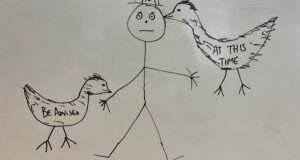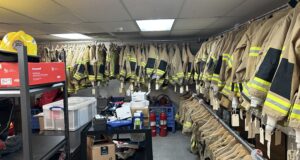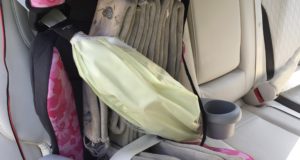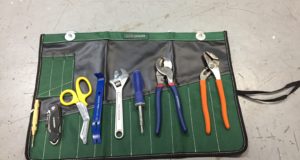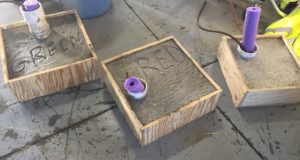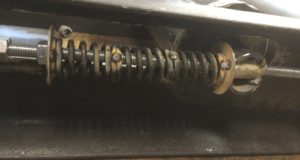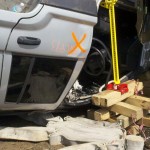 What are your options when faced with a vehicle roll-over pinning? What comes to mind first? Airbags, hydraulic tools, wreckers, jacks, lifting struts, pry bars, wedges?
What are your options when faced with a vehicle roll-over pinning? What comes to mind first? Airbags, hydraulic tools, wreckers, jacks, lifting struts, pry bars, wedges?
For this scenario you have a single victim pinned under an overturned vehicle. What is the safest and fastest option to free the victim? For the remainder of the discussion we are going to show the use of a jack. In the picture to the left and video to follow you will see the First Responder Jack in use, another common option is the farm-jack. Add other options in the comments below.
Stabilization
One of our first concerns is vehicle stabilization at any MVC, particularly when the vehicle is not on its wheels. In this roll-over pinning scenario we definitely don’t want the vehicle sliding or dropping on the victim. Use step-chocks and box cribs to fill voids. You also must anticipate what will happen to your stabilization as you lift. Will the car rock one way or another? Do you want the vehicle to pivot on the ground or part of your stabilization?
Cribbing
Personnel assigned to cribbing during the lift need to remain on their toes and fill voids as the lift is made. If you lift an inch, crib an inch. Incorporate wedges as needed. Cribbing should be placed on both side of the victim if possible to prevent any chance of the vehicle dropping back down.
Jack Operations
A solid base for the jack needs to be established with consideration given to the lifting point. The first responder jack base fits onto 2 – 4×4’s as seen in the picture and video. Other jacks have a flat base that can be pinned. The lifting point may be the door/window frame, rocker panel, or chain attached to vehicle frame that creates optimal vertical lift.
Remember: One firefighter operates the jack, know your jacks lifting capabilities, listen for the jack’s clicks (one at the top swing and one at the bottom) as the handle is moved which tells you the cycle is complete.
Jack height/reach is another consideration. Can we get the needed lift? What can be done to get more height?
Communications
The video below demonstrates great communication between the rescue team leader, the jack operator, cribbers, and victim rescuer. Keep in mind we all need to be on the same page prior to the lift and as the lift is being made. Practice this in training so it is second nature on the scene. (Video from a train-the-train course near Ann Arbor, MI).
[youtube]http://youtu.be/gA7BLG0f2ak[/youtube]
Pass it on!
 First Due Tackle Pass It On – Firefighter, Rescue & Extrication Training
First Due Tackle Pass It On – Firefighter, Rescue & Extrication Training
